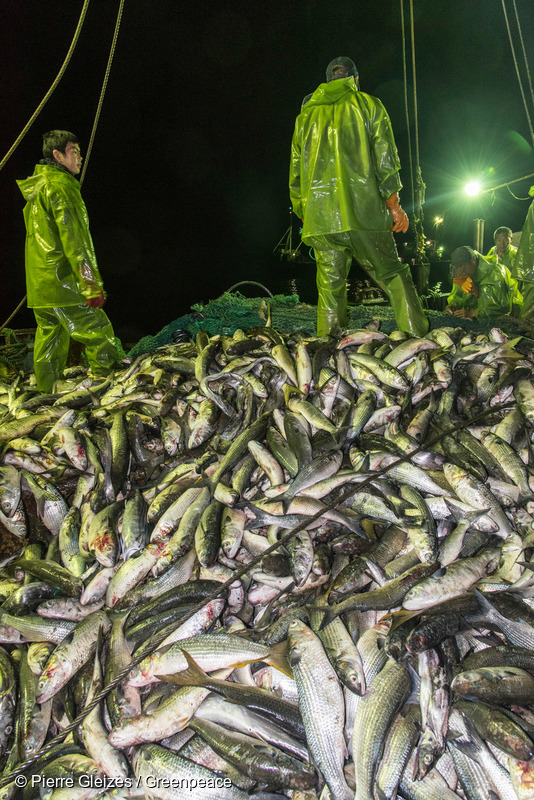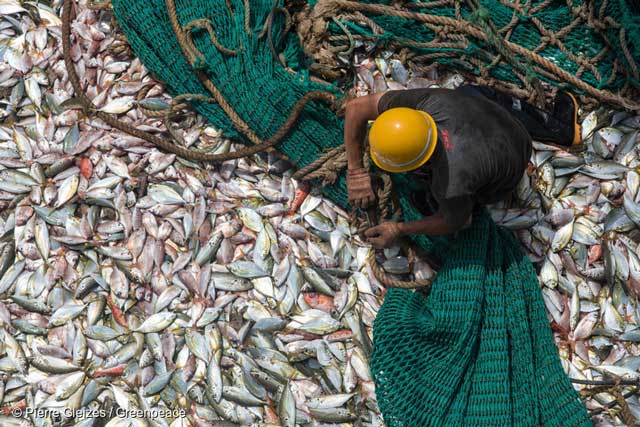Seafood is one of the most traded food commodities in the world. But do you know the story behind your seafood? Our current global system still falls short of achieving true traceability. And here’s why.

Seafood is one of the most traded food commodities in the world, with an estimated annual value of USD $164 billion. Whether fresh, frozen, or canned, seafood is found almost everywhere we shop and eat. But do you know the story behind your seafood?
Most people are familiar with the environmental challenges in the seafood supply chain. However, the dangers facing fishers who are engaged in one of the most dangerous and isolated jobs in the world are often less known.
As fish stocks decline and production costs increase, seafood companies attempt to cut corners by exploiting cheap labor, selling products that come from questionable origins, and/or using outdated and insufficient methods to ensure products tainted by forced labor and environmental harm aren’t in their supply chains. The complicated and opaque supply chain helps to conceal these practices and is an important contributing factor to the prevalence of illegal, unreported, and unregulated (IUU) fishing, overfishing, and modern slavery at sea.
Increasing environmental and human rights concerns from consumers and civil society organizations have pressured companies into paying more attention to seafood traceability—the process by which they track and publicly share how their seafood got from sea to shelf. Despite recent incremental changes, our current global system still falls short of achieving true traceability. And here’s why:
Lack of Observer Coverage and Protection
Fishing vessels usually operate far out at sea. Unless they have independent human observers or electronic monitoring onboard, they are also far away from the eyes of law enforcement. In these conditions, independent human observers play an invaluable role in providing third-party monitoring of compliance with fishing regulations and, in some cases, ensuring labor rights are honored. (Though monitoring labor rights has been outside of the role and training of observers to date, it is something that should be explored.)
Despite their importance, observer coverage in the commercial fishing fleet globally is extremely inadequate. For example, fishing vessels that use the longline fishing method, one of the main commercial fishing methods, often have harsher living conditions than other vessels and a high bycatch rate of sea turtles, sharks, and marine mammals. However, many regional fishing management organizations still only mandate that 5% of such vessels have a human observer, leaving up to 95% of them to operate without any third-party verification.
Additionally, as we advocate for expanded observer coverage, it is vital to recognize that the work of an observer is notoriously dangerous. Fishing captains and mates often try to prevent the reporting of their alleged crimes, which in some instances has led to the loss of life. Therefore, policy expansions in this area must address observer protection and safety.
Seafood imported to the U.S. is frequently processed in or caught by vessels flagged to countries that have not adopted international conventions designed to protect the rights of fishers or observers and are widely known to have poor track records on human rights and labor issues. Nearly 11 percent of total U.S. seafood imports and over 13 percent of U.S. imports caught at sea in 2019 were derived from illegal, unreported, and unregulated fishing.
Inadequate Tracking
Although most vessels are equipped with location monitoring systems (VMS and/or AIS), regulations governing their use vary from jurisdiction to jurisdiction and, as a whole, do not cover nearly enough of the commercial fishing fleet. As a result, it is common for vessels to turn off their location while engaging in illegal fishing activities. Without the ability to verify the location of fishing vessels, it becomes very difficult to verify the legitimacy of seafood caught in areas where fishing is permitted.
Unmonitored Transshipment
Transshipment at sea—in which seafood is transferred from one vessel to another, allowing the fishing vessel to stay out at sea longer—is now common practice in distant water fishing. However, it has been widely recognized that fish are often not properly tracked or labeled when they are moved from individual fishing vessels onto the transshipment vessel. This means that fish are likely to end up mislabeled, and a company may believe its seafood was sourced from a vetted vessel, a specific part of the ocean, or even be one kind of species when, in fact, the break in the supply chain provides an opportunity for shady companies to launder fish and other seafood.
In addition to traceability concerns, transshipment also enables ships to remain at sea for months or even years at a time, as the vessels to which they transship fish also generally provide fuel and supplies. This practice is a risk for human and labor rights abuses as it keeps workers far out at sea for longer periods and often away from access to the internet or cell service to communicate with anyone beyond their vessel.
To address these factors, companies should either commit to completely phasing out the use of transshipment in their supply chain or comply with the Aligned Guidance for At Sea Transshipment.

Commingling in Processing
Once seafood reaches land, its next stop is often a processing facility. These facilities may take in seafood from hundreds of vessels within a short period of time. It is very difficult to keep track of which seafood came in with what shipment once it’s moving along conveyor belts and through factories and warehouses. This means that current traceability mechanisms and processes might be giving companies and consumers alike a false sense of security.
Since it’s possible for seafood in their vetted supply chain to be commingled in processing facilities with seafood from other buyers, seafood companies must take into account all the conditions in the industry as well as those at the national level.
Reliance on Ineffective Audits
Social audits are the most common method companies use to monitor their supply chain. However, the human rights community has long said that those audits are insufficient, and a recent investigation found human rights violations in seafood processing facilities that had already passed audits. To effectively address the problems and ensure that they are complying with international labor, health, safety, and environmental standards, companies must genuinely engage with workers who are employed in their supply chains.
Audits aside, at a bare minimum—and I mean BARE MINIMUM—companies should be cross-checking their suppliers with lists of bad actors, such as the list of vessels subject to US Customs and Border Protection Withhold Release Order or the national or Regional Fisheries Management Organization-maintained list of vessels that engage in IUU fishing, and NGO and media reports. Although it might seem like an obvious step, it is still one that companies are not taking. A Greenpeace East Asia report from 2022 discovered a can of Bumble Bee tuna for sale in the United States, which, when checked on Bumble Bee’s public website, traced back to a fishing vessel that US Customs and Border Protection actively sanctioned for using forced labor.
In Conclusion
…all of this means that the “traceability” we have available in many seafood supply chains today might be giving consumers and companies a false sense of security. Knowing this, companies that want to do right by workers and our oceans—and protect themselves from legal risks—must address these and other traceability concerns in their supply chains and engage in advocacy at regional, national, and international levels to ensure regulations are implemented and enforced, leveling the playing field for all companies operating in this space.
